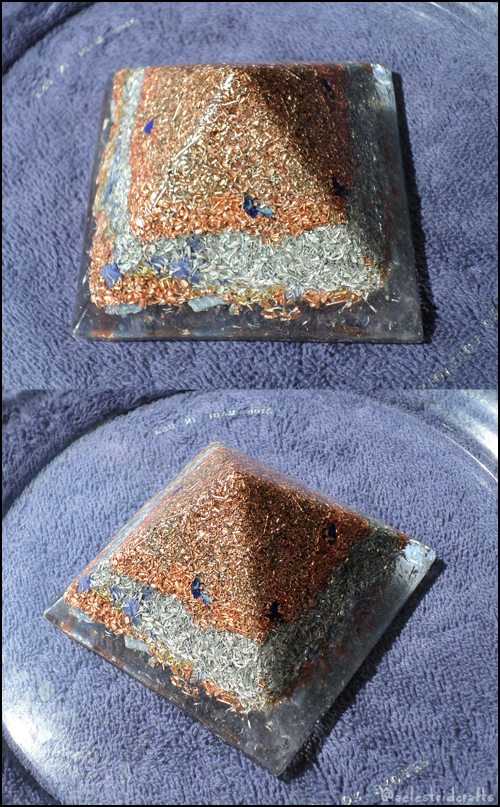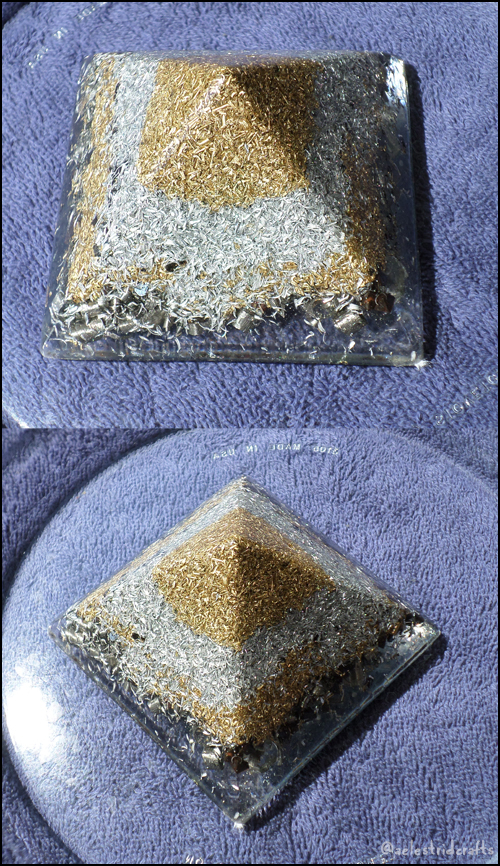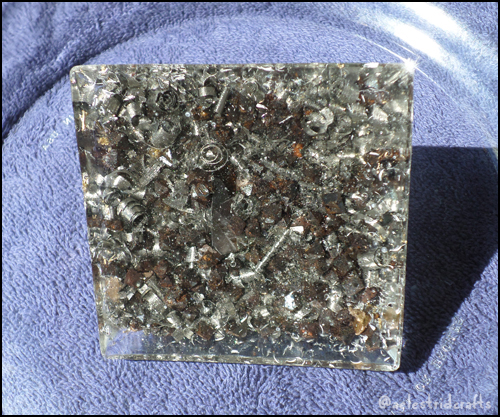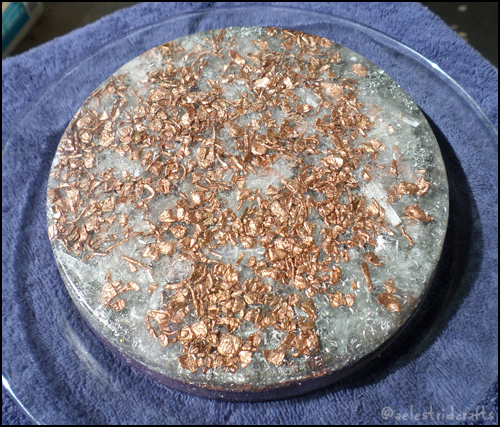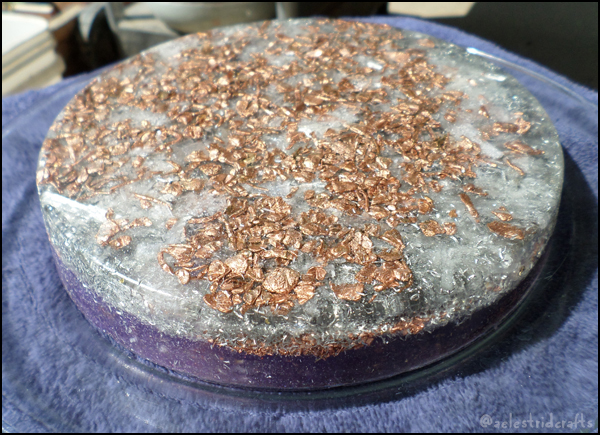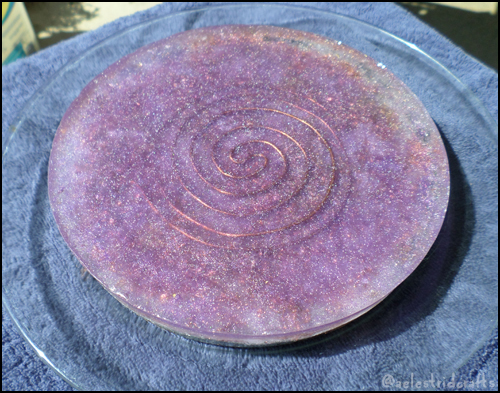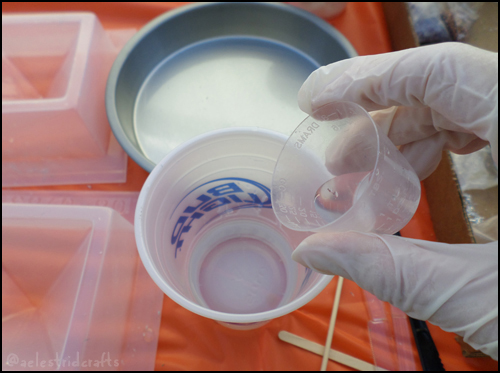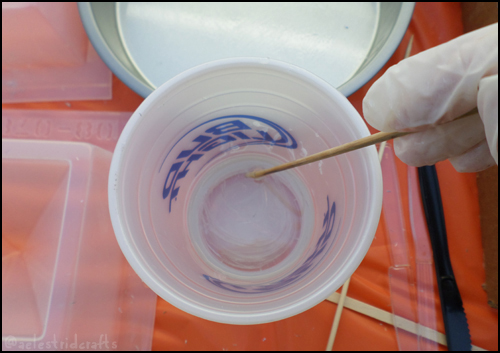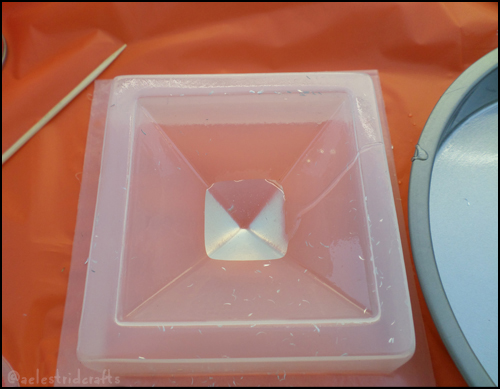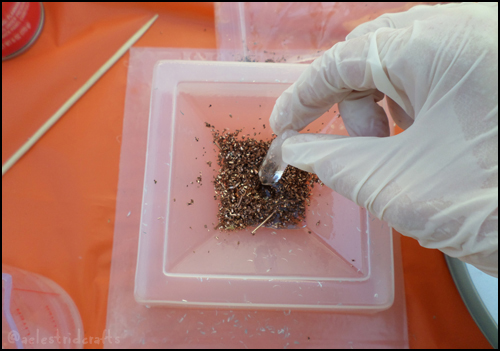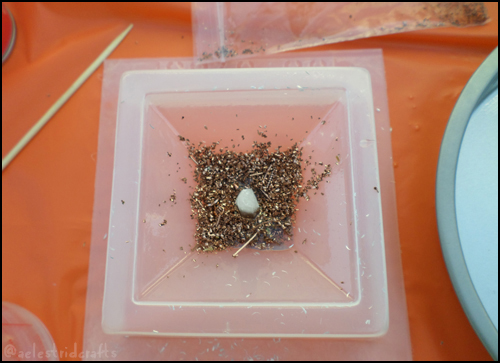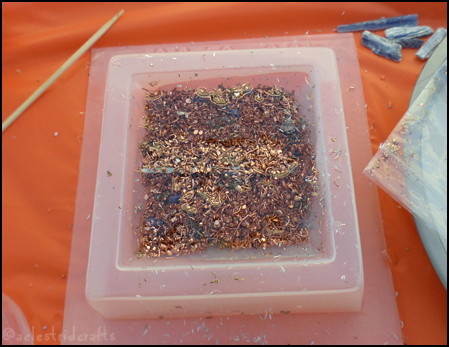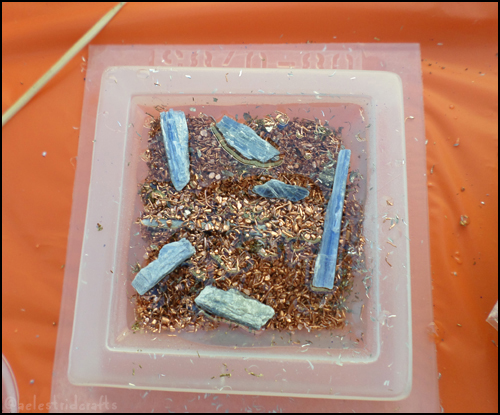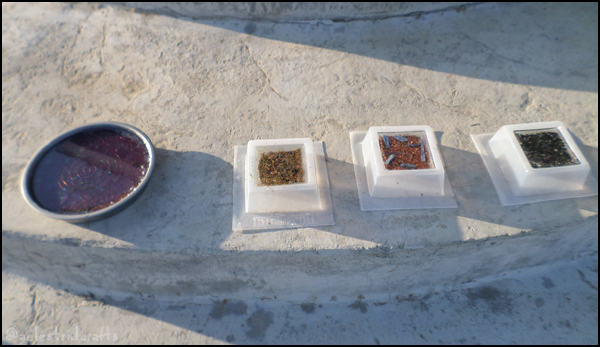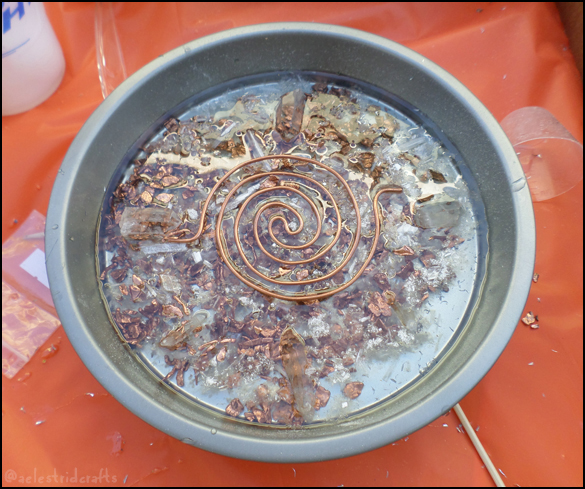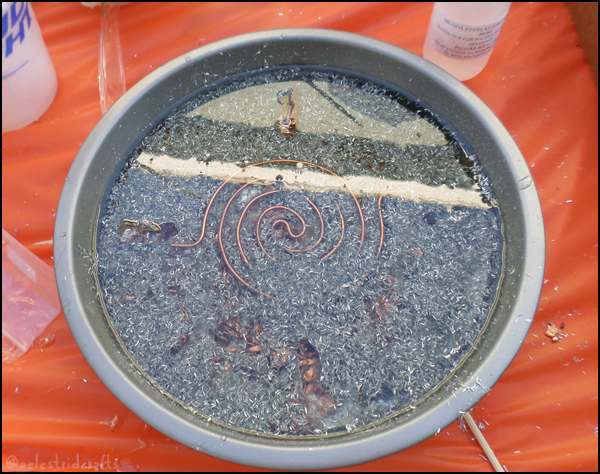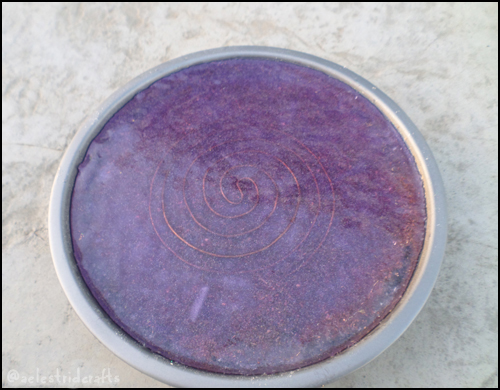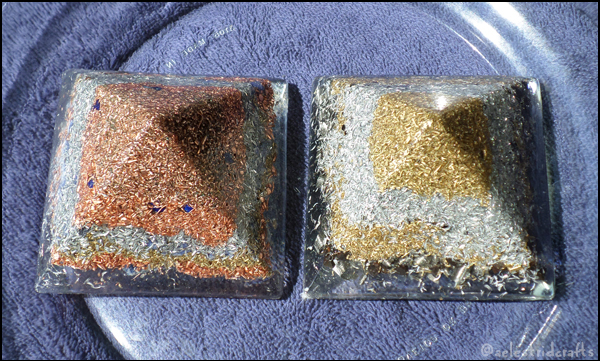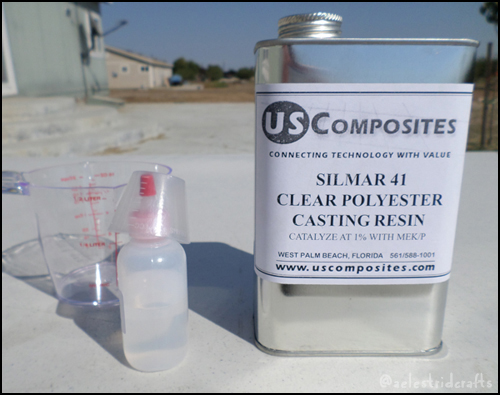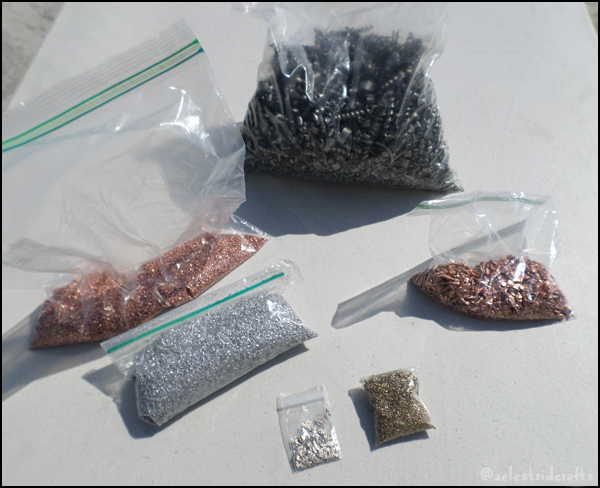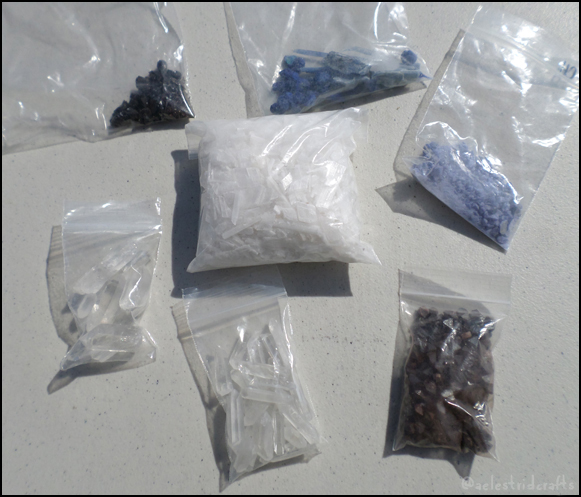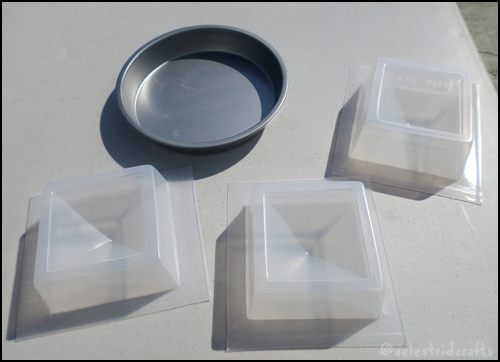Looking for a safe, effective, and reliable way to charge your crystals, jewelry, and tools? While there are a lot of great ways to charge or cleanse the things you work with, I’ve never found a better method than an orgone charging plate. They are continuously effective and contain all the elements to cleanse your tools of any unwanted energy as well as charging them back to their full level of energetic radiance. Let’s try making a simple charging plate!
First, you’ll need your basics:
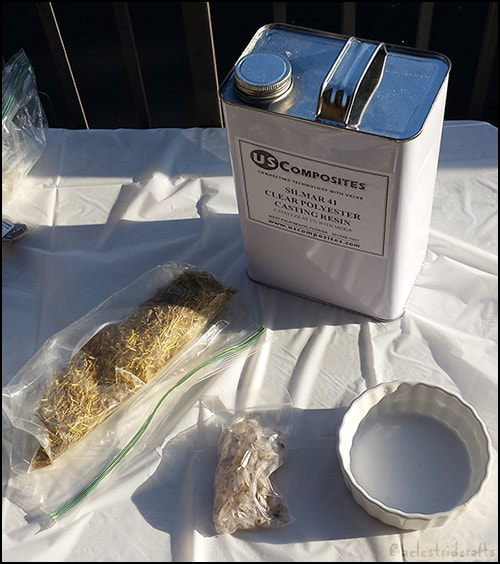
I use Silmar 41 clear casting resin for these. When you finish your piece, you’ll want it to be something you can proudly place on your altar or table, but of course, the cheaper resin will work just fine. (Don’t forget your safety protective equipment!)
Pictured are brass shavings and a bag of crystal points. You can use any metal or combination of metals as you see fit. I chose brass for this one, but copper is one of my favorites to work with too. Again, any metal shavings you choose are fine.
You’ll see my mold here:
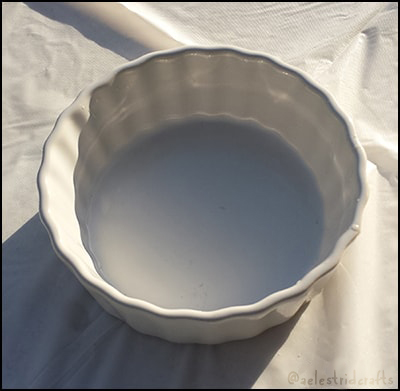
We want something that isn’t too large or complicated in its design. You can find these at thrift stores or discount stores. I got the above at the dollar store and scour the shelves every time I go for suitable molds. Make sure it has a flat bottom and not a curved or ridged one or your plate surface won’t hold on to your stones and jewelry as easily.
Let’s take a look at the kinds of things we’ll want to add to an orgonite charging plate:
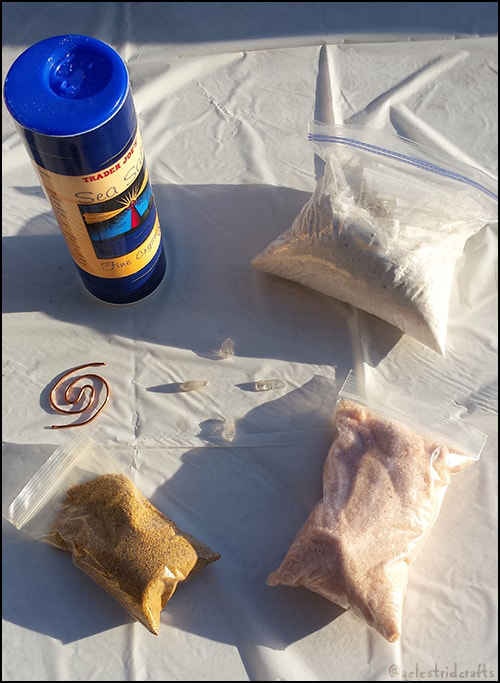
Salt is pretty much the major ingredient. Pictured here is regular sea salt and pink Himalayan salt. I’ve also got a large bag of selenite shards and dust that are essential to bringing a cleansing energy to the plate. If you choose, you can include herbs like sage or palo santo. Really, if it cleanses and charges, it can go in the plate. Just be sure you don’t add too many types of crystals whose energies might compete with each other. We want to keep the energy of this plate simple and focused.
I’ve chosen, for this piece, to use sea salt and selenite with a copper SBB coil and 4 quartz points placed at each direction.
Let’s start with the first layer:
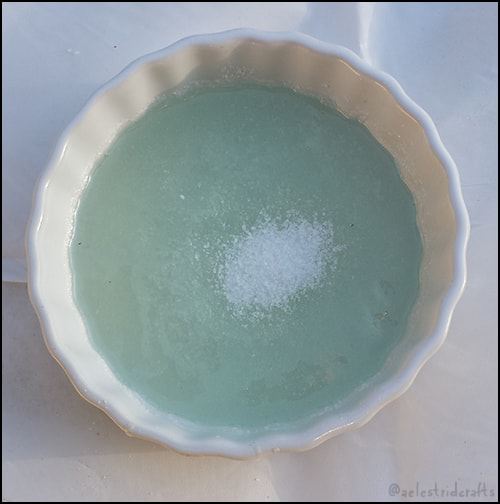
The first layer is a salt layer, and once I’ve poured a generous amount I stir it into the resin to be sure it’s mixed well. Next, I’ll add the selenite:
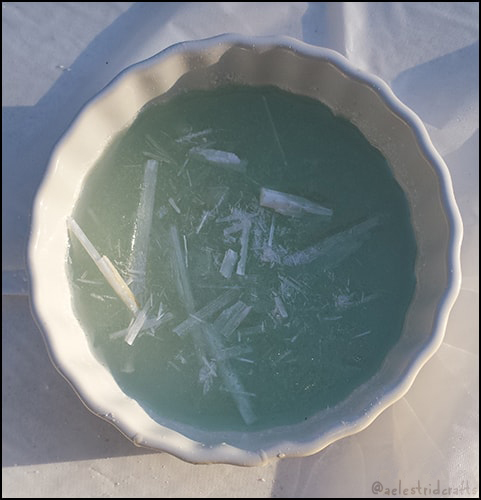
After this, I’ll set each quartz point inside and cover it with brass, topping it with my SBB coil. Now we wait for it to cure.
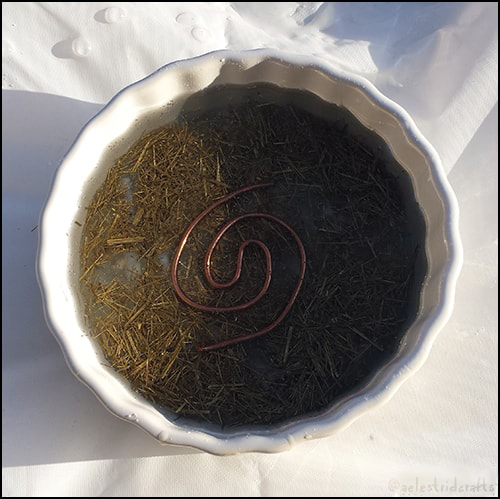
Let’s see what it looks like now that it’s finished!
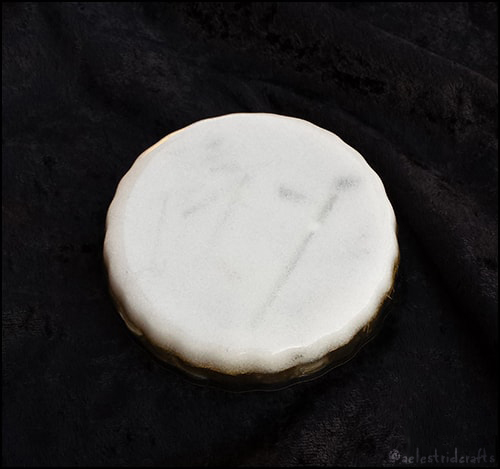
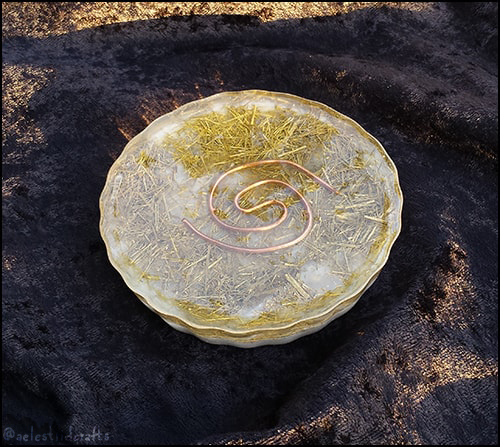
You can see the shards of selenite I laid out across the top. Nice.
This orgonite charging plate is about the size of my palm and took a half cup of resin to make. You may wish to make yours bigger or smaller depending on how large the items you want to charge are. I made one the size of a cake pan (quite an undertaking with a lot of resin) but then I needed something that could charge large crystals. For smaller crystals, a charging plate the size of the above is perfect.
Here’s our piece in action, charging and cleansing a dravite crystal:
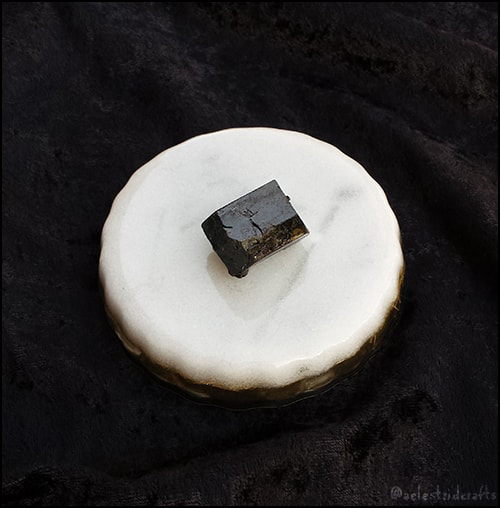
Just leave it like that for awhile and soon you’ll get a stone that’s ready to work again!
A few tips to keep in mind:
I’ve found that it’s best to charge one item at a time. With my big plate, it was tempting to throw 20 different stones on there at once, but what ends up happening is the conflicting energies compete and negate each other and nothing gets charged. Charge each piece at a time. Sometimes it’ll take a particular stone only a day, but sometimes it takes several days, depending on what needs to be cleansed. When you feel it’s ready, you’ll know. Otherwise, don’t be afraid to leave it on the charging plate as long as it needs.
You can get as fancy or simple as you want when making these. If you’d like to bless or infuse yours with oils, ritual, full moonlight, or anything during the process of making it all the better. Make it yours because its going to be working for you.
This is great way to charge sensitive crystals that might be easily damaged by salt baths, water, or direct sunlight. An orgonite charging plate never loses its ability to charge and cleanse, regardless of how often you use it (I’ve used my big one for years now and it still feels amazing).
Questions or comments? Let me know!
